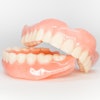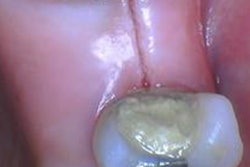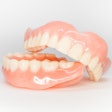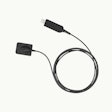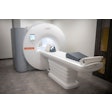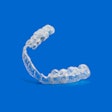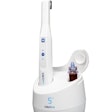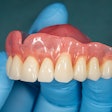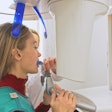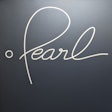
Practitioners seeking to detect pathological changes in their patients' soft and hard oral tissue may find that optical coherence tomography (OCT) works as well as -- or even better than -- cone-beam CT (CBCT).
In a new study, researchers from multiple institutions set out to compare OCT with CBCT for differentiating changes in oral tissue. Detecting harmful changes in patients' oral tissues earlier, and with less radiation, could lead to better treatment strategies and outcomes.
The authors concluded that OCT can reliably differentiate between different oral tissues ex vivo based on pixel intensity values (Oral Surgery, Oral Medicine, Oral Pathology and Oral Radiology, July 2016, Vol. 122:1, pp. 98-103).
“It basically provides near-histology information without the need for biopsy.”
"When a tissue undergoes pathological change such as cystic, neoplasmic, or inflammatory change, the properties of the tissue change as well," Mina Mahdian, DDS, MDSc, said in an interview with DrBicuspid.com. "Based on our findings, OCT can provide information which can potentially be used as a preliminary modality to track changes as tissue undergoes pathological change and assist practitioners in diagnosing the nature of pathology. It basically provides near-histology information without the need for biopsy."
Dr. Mahdian is the lead author of the study. She is an assistant professor in the department of prosthodontics and digital technology at the Stony Brook University School of Dental Medicine in Stony Brook, NY.
Minimal cost
The researchers noted that it is difficult to have an accurate and reliable method for detecting changes in tissue undergoing pathologic change. Optical coherence tomography is a noninvasive imaging modality that uses near-infrared light and penetrates the tissue at subsurface levels. Caries detection and periodontal evaluations are among its present uses.
"There is a relatively good body of research on dental applications of OCT specifically in caries detection and oral cancer diagnosis; however, our study took another approach, which was to evaluate the reliability of this modality in tissue characterization," Dr. Mahdian said.
 Mina Mahdian, DDS, MDSc, from Stony Brook University.
Mina Mahdian, DDS, MDSc, from Stony Brook University.One potential advantage is the minimal cost of OCT compared with other imaging techniques, she noted.
"We wanted to see if this modality can be used as an alternative/supplemental modality to the current modalities that primarily use x-radiation for diagnostic purposes," she said. "This modality provides real-time images, which could render diagnostic information chair-side with minimal cost compared to more costly imaging techniques."
The current study analyzed four different tissues (fatty, ex vivo human cancellous bone, ex vivo human cortical bone, and ex vivo human enamel) using a prototype OCT unit (Axsun Technologies) and a 3D Accuitomo 170 CBCT scanner (J Morita). The tissues were kept hydrated and prepared in 5 x 5 x 3-mm blocks.
The pixel intensity values from OCT images had a "similar pattern in comparison with grayscale values obtained from CBCT," according to the authors. Tissues have different densities, which scatter light differently. As OCT works on light refraction and scattering, pixel intensity values will change depending on tissue densities.
Penetration depth
Previous studies have shown that OCT may have less penetration depth (1 to 3 mm) than CBCT or ultrasound, the authors wrote. They also noted that tissue hydration is key when using OCT and that they had difficulty keeping all tissue specimens properly hydrated, especially the fatty tissue. Sample size was another issue in the study.
"Clinicians need to consider that the information provided by OCT is limited by the penetration depth of the laser that is used in this modality," Dr. Mahdian said. "Therefore, at this point, it can only serve as a potential supplemental modality or a preliminary screening tool."
Dr. Mahdian and co-authors concluded that because of OCT's noninvasive and nonionizing radiation exposure characteristics, the technology could be used as an alternative or complement to CBCT imaging.

